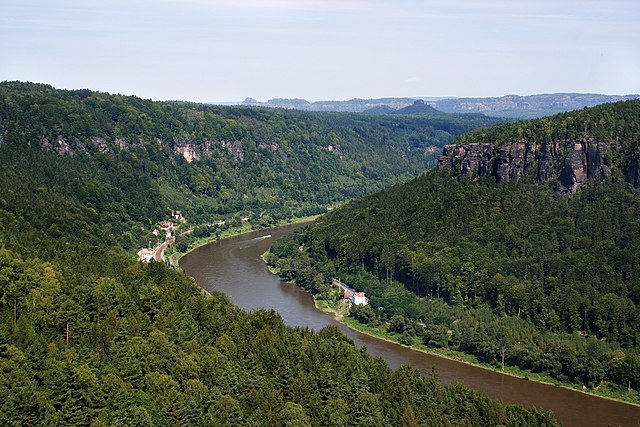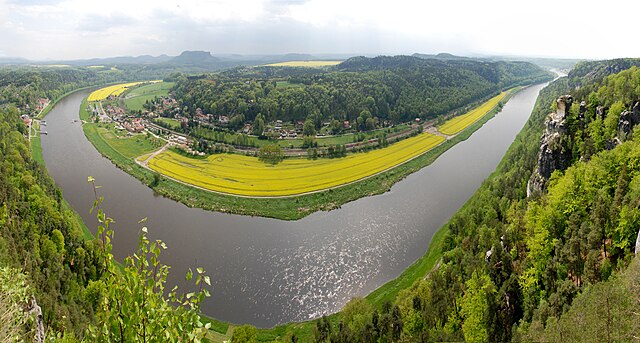Elbe Day, April 25, 1945, is the day Soviet and American troops met at the Elbe River, near Torgau in Germany, marking an important step toward the end of World War II in Europe. This contact between the Soviets, advancing from the east, and the Americans, advancing from the west, meant that the two powers had effectively cut Germany in two.
In an arranged photo commemorating the meeting of the Soviet and American armies, 2nd Lt. William Robertson (U.S. Army) and Lt. Alexander Silvashko (Red Army) stand facing one another with hands clasped and arms around each other's shoulders. In the background are two flags and a poster.
General Nikolay Makarov with Admiral Mike Mullen and Russian ambassador to the United States Sergey Kislyak at Arlington National Cemetery during the Elbe Day commemorations in 2010.
At the 2015 commemoration of Elbe Day, Russian Ambassador Sergey Kislyak bows his head after laying a wreath at the Spirit of the Elbe marker in Arlington National Cemetery.
Monument to the meeting of Allied forces, Torgau, Germany
The Elbe is one of the major rivers of Western Europe. It rises in the Giant Mountains of the northern Czech Republic before traversing much of Bohemia, then Germany and flowing into the North Sea at Cuxhaven, 110 kilometres northwest of Hamburg. Its total length is 1,094 km (680 mi).
The Elbe (Labe) near Děčín, Czech Republic
The Middle Elbe in the North German Plain near the village of Gorleben. In this section, the river had been part of the Iron Curtain between West and East Germany during the Cold War. For that reason, the river banks even today look relatively natural and undeveloped. (Photo taken 2011)
View of the Elbe in Saxon Switzerland, an area in Germany
The Port of Hamburg on the Elbe








